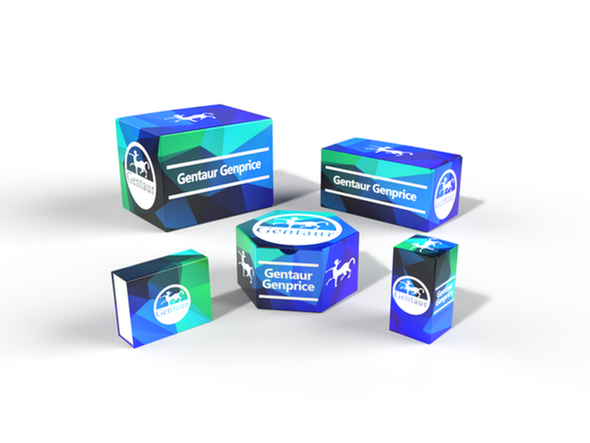740
Human Cerebellin-1 (CBLN1) ELISA Kit | AE61541HU
- SKU:
- 740-AE61541HU
- Availability:
- Usually ships in 5 working days
Description
Human Cerebellin-1 (CBLN1) ELISA Kit | AE61541HU | Gentaur UK, US & Europe Distribution
Species Reactivity: Human (Homo sapiens)
Abbreviation: CBLN1
Alternative Name: Cerebellin 1
Application: ELISA
Range: 0.156-10 ng/mL
Sensitivity: 0.054 ng/mL
Intra-Assay: ≤4.9%
Inter-Assay: ≤10.2%
Recovery: 1, 03
Sample Type: Serum, Plasma, Other biological fluids
Detection Method: Sandwich
Analysis Method : Quantitive
Test Principale: This assay employs a two-site sandwich ELISA to quantitate CBLN1 in samples. An antibody specific for CBLN1 has been pre-coated onto a microplate. Standards and samples are pipetted into the wells and anyCBLN1 present is bound by the immobilized antibody. After removing any unbound substances, a biotin-conjugated antibody specific for CBLN1 is added to the wells. After washing, Streptavidin conjugated Horseradish Peroxidase (HRP) is added to the wells. Following a wash to remove any unbound avidin-enzyme reagent, a substrate solution is added to the wells and color develops in proportion to the amount of CBLN1 bound in the initial step. The color development is stopped and the intensity of the color is measured.
Product Overview: Precerebellin, or CBLN1, is the precursor of a conserved brain-specific hexadecapeptide termed cerebellin. CBLN1 and other members of the precerebellin family also contain a C-terminal C1q signature domain that mediates trimeric assembly of atypical collagen complexes. The deduced 193-amino acid protein contains a hydrophobic N terminus followed by the cerebellin sequence. It also contains 3 potential N-glycosylation sites. Over about 145 amino acids in its C terminus, CBLN1 shares 31.3% identity with C1QB, but it lacks N-terminal collagen-like motifs. The cerebellin peptide is flanked by val-arg and glu-pro residues, suggesting that it is not liberated from precerebellin by the classical dibasic amino acid proteolytic mechanism seen in many neuropeptide precursors.
Stability: The stability of ELISA kit is determined by the loss rate of activity. The loss rate of this kit is less than 5% within the expiration date under appropriate storage condition. The loss rate was determined by accelerated thermal degradation test. Keep the kit at 37°C for 4 and 7 days, and compare O.D.values of the kit kept at 37°C with that of at recommended temperature. (referring from China Biological Products Standard, which was calculated by the Arrhenius equation. For ELISA kit, 4 days storage at 37°C can be considered as 6 months at 2 - 8°C, which means 7 days at 37°C equaling 12 months at 2 - 8°C) .










